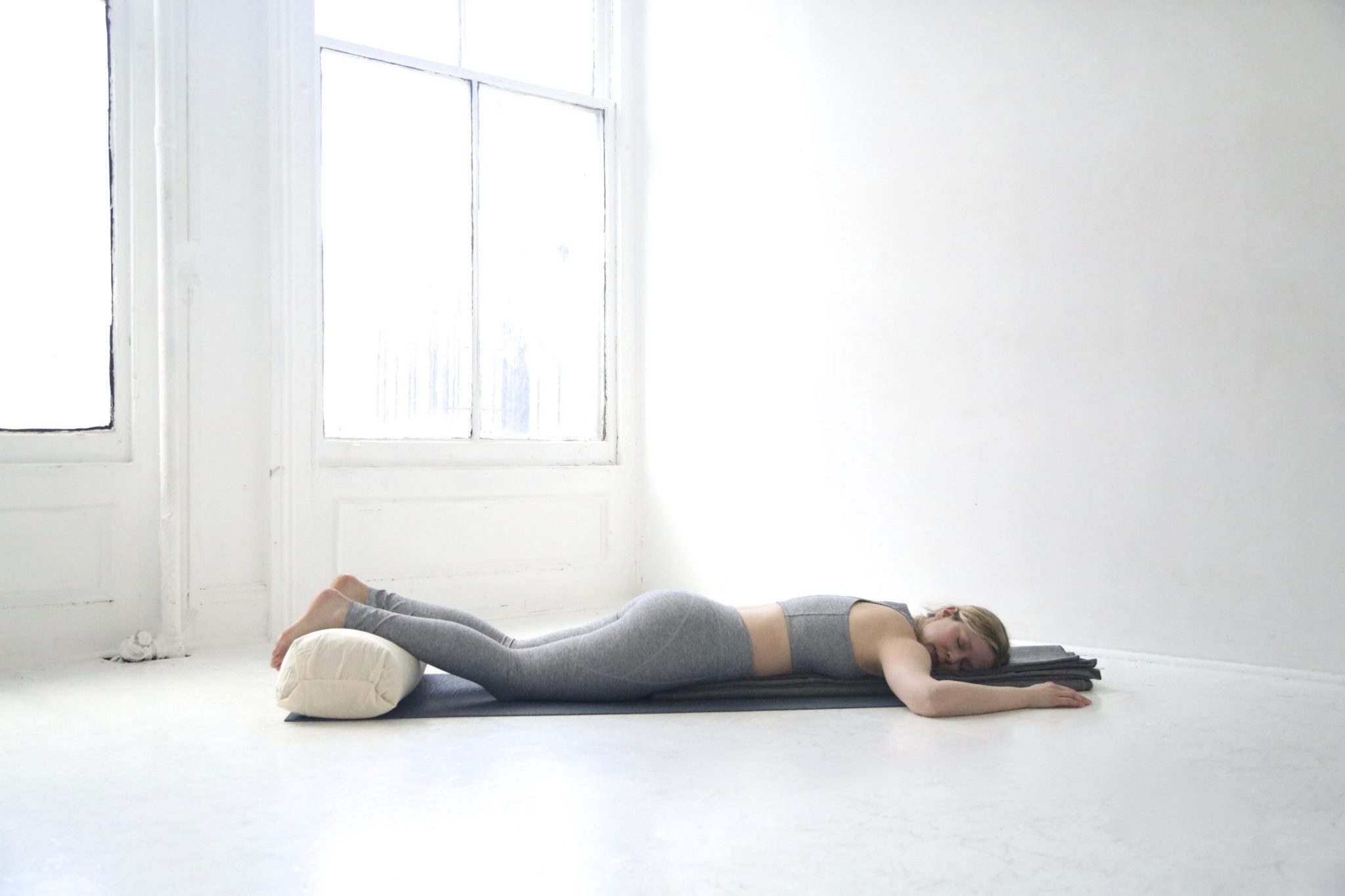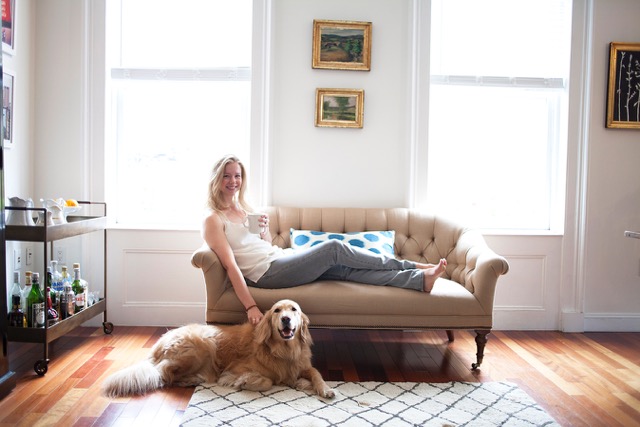Hard-wired to achieve, we’re conditioned to plow through intensity, discomfort or intuition rather than sitting with our experience. Slowing down is not part of our vocabulary. It’s often the case that we don’t notice how exhausted we are, or how far off the path we’ve wandered, until we’re forced to stop.
Restorative yoga invites a parasympathetic, or relaxation, response in the body. Our heart rate, blood pressure, and oxygen consumption decrease and blood returns to our digestive system after having been called to our extremities in preparation to either fight or flee. I took an amazing restorative class last week and woke up to find myself drooling. Since then, I’ve been enjoying the following sequence in my home practice. You can use pillows and blankets from around your home. A lavender-filled eye pillow will likely push you over the edge (in a good way)! Finding the space to rest will create space in your life.
Viparita Karani (Legs Up The Wall)
This inverted pose relieves tired legs and feet. You can practice Viparita Karani without props, simply lying on your back and taking your legs up the wall. Long, folded blankets (or a bolster) can be placed under your sacrum (the back of your pelvis) to create a deeper inversion. Place the blankets a few inches away from the wall so that the buttock wedges between the blankets and the wall. Those of you with tight hamstrings can modify this pose by lying on your back and placing your calves over the seat of a chair.
Hold 5-10 minutes. Tingly or sleepy sensations in your legs/feet are an indication that it’s time to come out. You can also bend your knees and come into Supta Baddha Konasana on the wall. (Contraindications for this pose are pregnancy, eye issues, extremely high or low blood pressure, hiatal hernia and heart conditions.)
Floating Pose
One word: heaven. This pose is known to soothe the symptoms of anxiety and stress. Stack two long-folded blankets on your mat. Place your pubic bone on the short edge of the blankets and your head (turned to one side) at the opposite end. A bolster or short stack of blankets goes under your ankles. Your elbows can be bent, arms shaped like a cactus framing your head.
Hold 5-10 minutes. Be sure to turn your head to the opposite side halfway through.
Supta Baddha Konasana (Reclined Bound Angle Pose)
This one’s my personal favorite. Using the same blanket set-up from Floating Pose. Lie on your back and place the edge of the folded blankets under your shoulder blades. Using your hands, grab the top blanket behind you and fold it back to support your head. Place a block or folded blanket under each thigh.
Hold 5-10 minutes.
Savasana
I’m working hard to perfect this pose. Treat yourself at home with a longer Savasana, fully supported with blankets under your upper thighs and knees, or grounded with a stack of blankets over the thighs and pelvis. Sheer bliss.






I think all of us need to take more time to practice savasana…
Just found your blog: enjoying quite a bit. Thank you for sharing your journey and practice. So many nuggets speak to my current path and place thereon.
I’m so glad you’re enjoying the blog. Always happy to share my experiences on the path; thank you for your sweet words.
I am loving your blogs and finding them truly insightful.
I qualified 2 years ago but have only just found the confidence to start teaching. My story feels similar to yours as I too Left a cooperate world to follow and peruse my love of yoga
I am teaching in a very dynamic hot yoga studio and am covering the restorative classes which I have found a love and passion for. I am ending to find People struggle with these classes and tend to prefer the power classes. As they find them easier to loose their mind.
It’s only through my own practice for 15 years that I’ve moved away from the power and flow classes into the more restorative practices to ground myself and restore.
amy life is very crazy busy raising three children on my own as I’m excited to grow as a teacher in England.
I read your article about sequencing but this is still an area that I am struggling with. When I am researching and planning my classes I find a lot of the literature I read is based on vinyasa rather than grounding practices.
Do you have any suggestions on where I can find class plans for restorative classes?
I would love to attend your teacher training one day as my brother lives in New York but until the kids leave home I’m not sure this is possible
Warm wishes
Hi Karen,
Thanks so much for your comment! Judith Lasater is THE expert on restorative yoga. I would check out her website, which contains a lot of useful resources. http://www.judithhansonlasater.com
Keep teaching what you love. I hope our paths cross in NYC one day. Until then, I look forward to connecting with you here at H(OM)E!
Warmly,
Chrissy